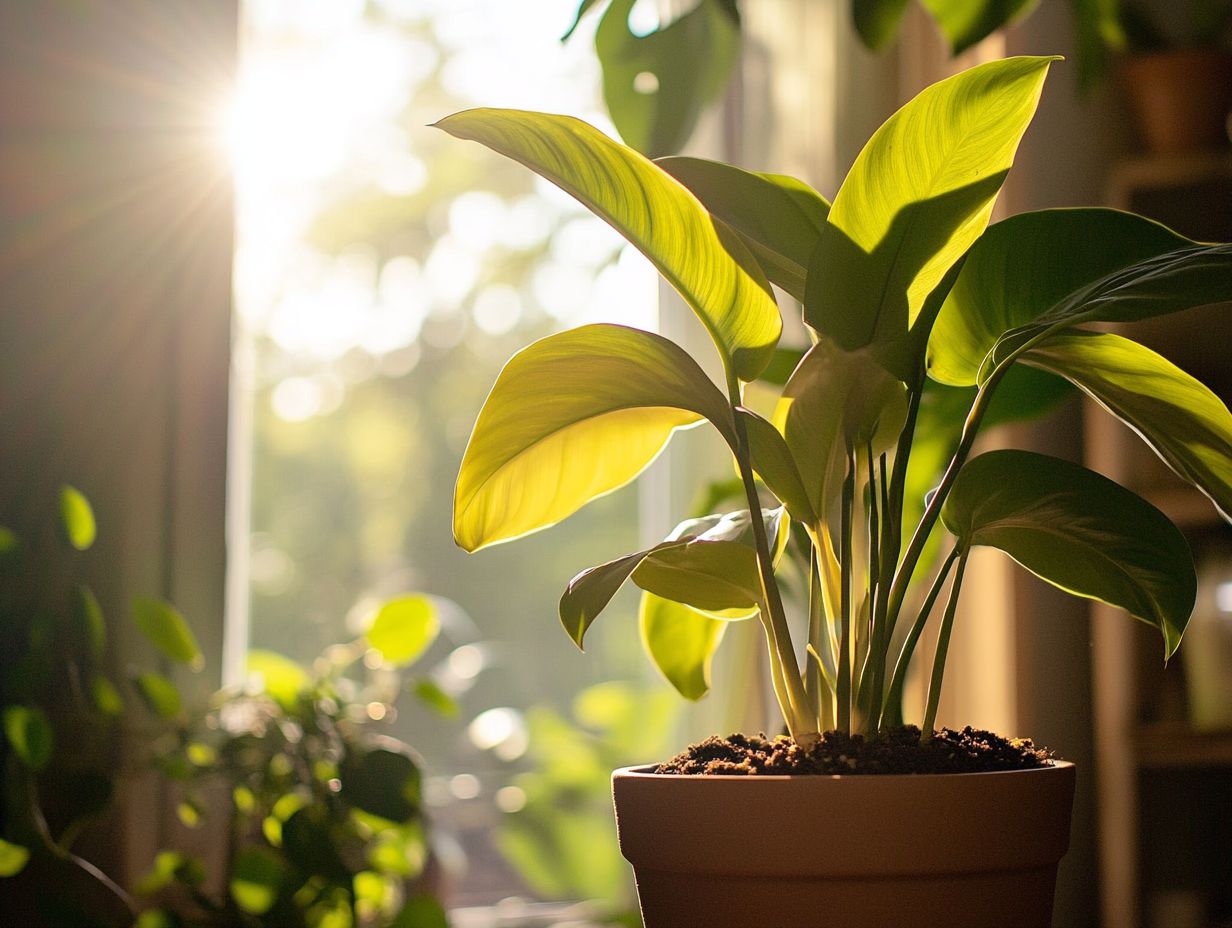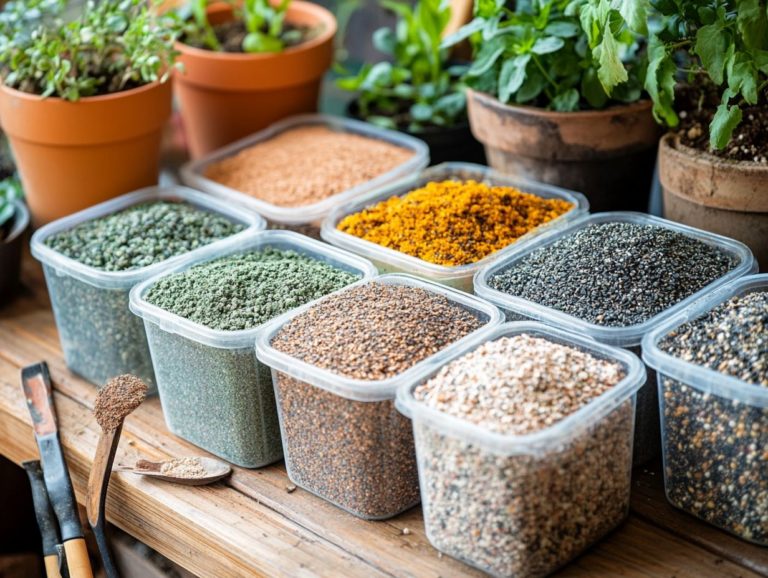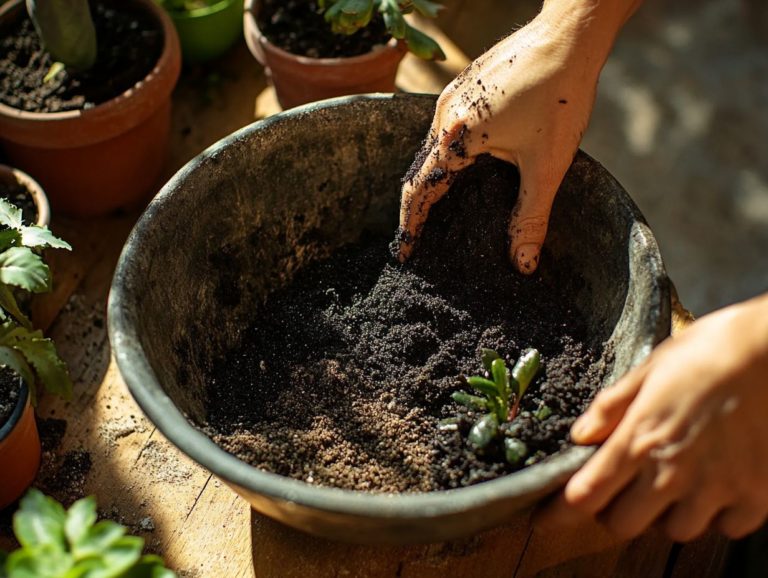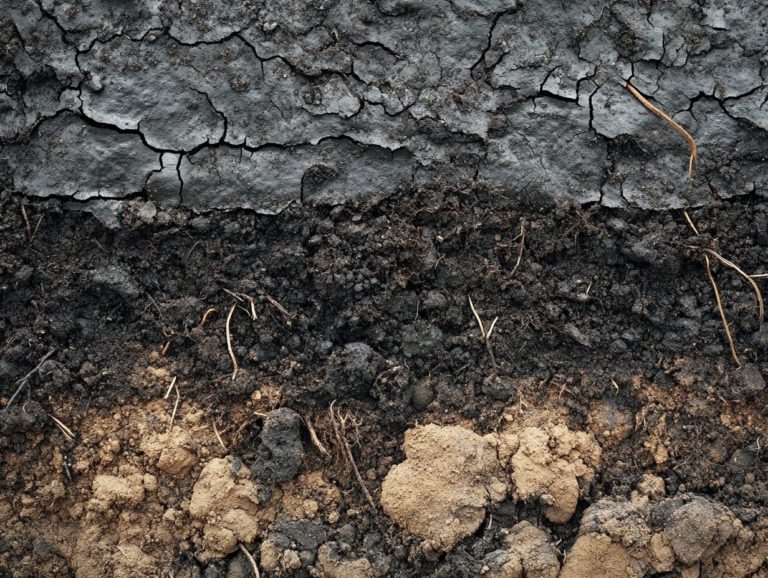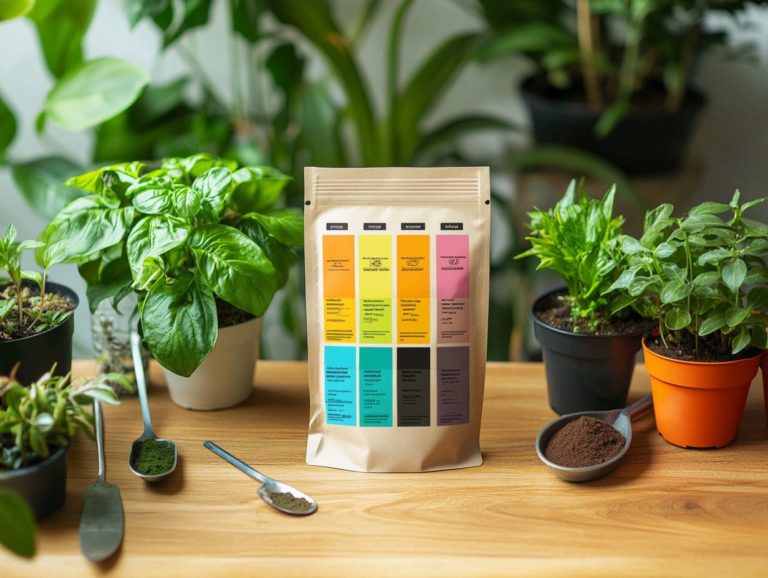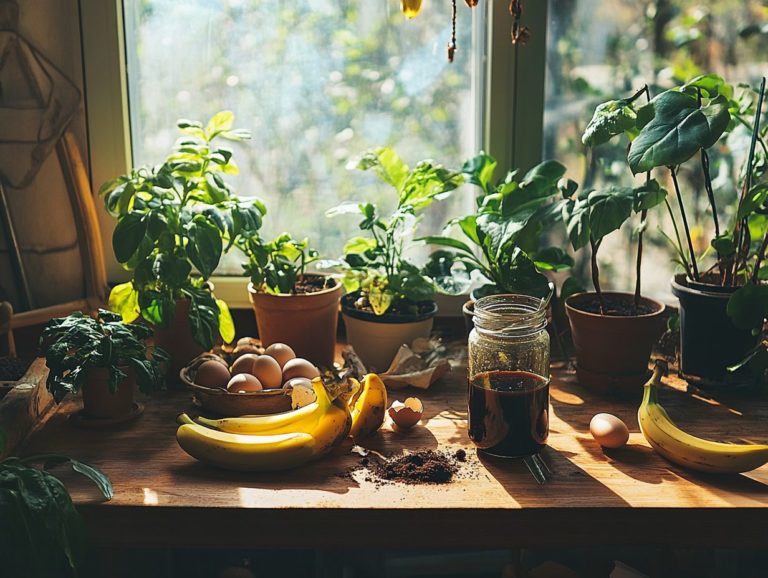Benefits of Using Coir in Indoor Plant Soil
Coir, sourced from coconut husks, is becoming increasingly favored by indoor gardening enthusiasts. This natural and sustainable material significantly enhances drainage and aeration in your plant soil, all while supporting environmental sustainability.
Explore how you can effectively incorporate coir into your indoor plant care routine, including the use of blended coir products. Consider its numerous advantages and potential drawbacks. Discover alternatives should this material not align perfectly with the needs of your specific plants.
Dive into the world of coir and elevate your indoor gardening game today!
Contents
Key Takeaways:
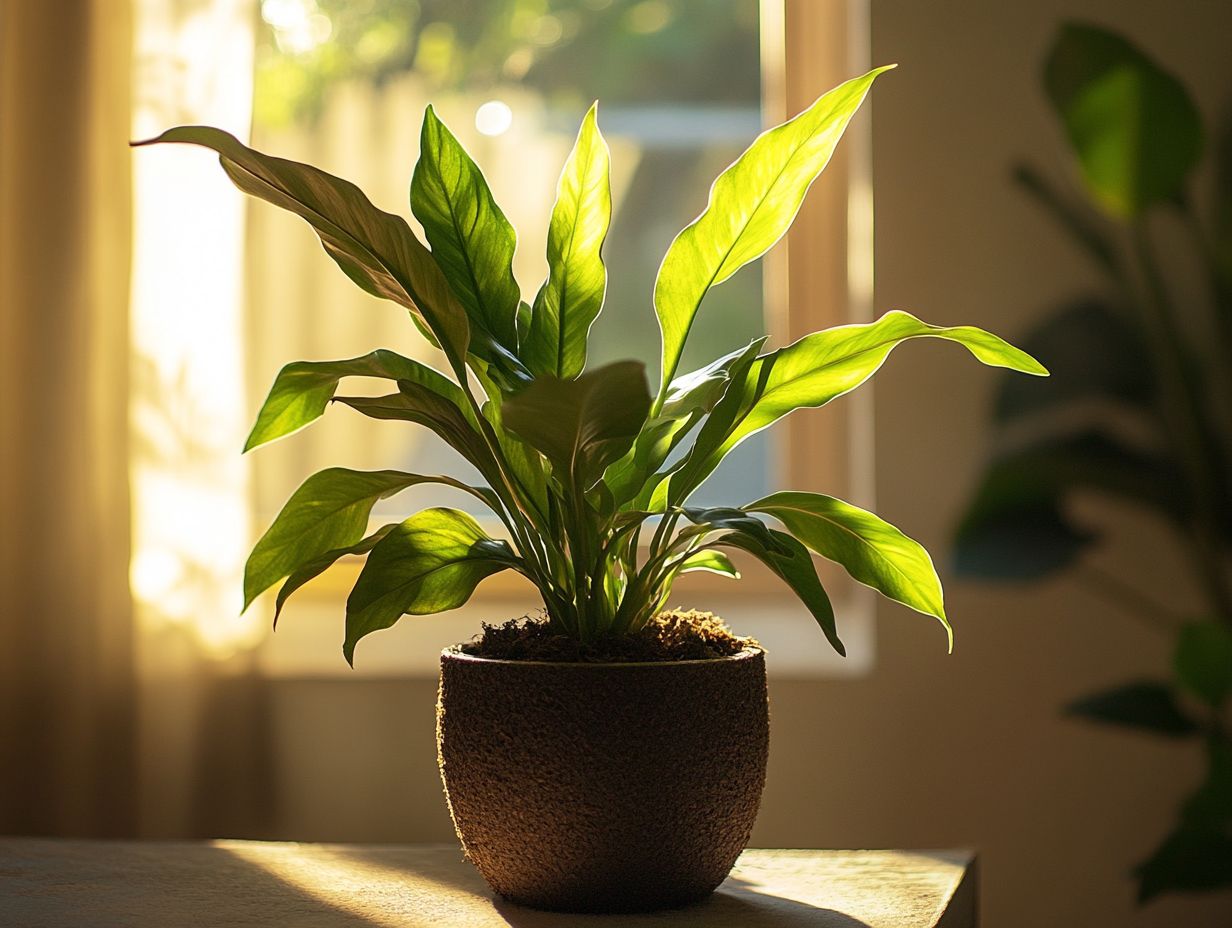
- Coir enhances indoor plant soil by improving drainage and aeration, promoting root growth and preventing waterlogging.
- As a natural and sustainable material, coir is eco-friendly and has minimal impact on the environment.
- When using coir in indoor plant soil, consider the specific needs of your plants and the environment, as well as the proper mixing ratios and application techniques.
What is Coir and How is it Made?
Coir, or coconut fiber, is a remarkable natural material extracted from the outer husk of coconuts. It s gaining traction in eco-friendly gardening circles for its exceptional water retention, pH neutrality, and sustainable sourcing.
The journey of coir begins with soaking coconut husks in water to separate the fibers. These fibers are then dried and transformed into a variety of products, including coir bricks and blended coir solutions.
Different production methods yield distinct types of coconut coir, such as brown and white coir. Brown coir is sourced from mature coconuts, making it perfect for enduring garden projects and mulch. On the other hand, white coir boasts a softer texture, making it the go-to choice for potting mixes.
The versatility of organic coco coir has positioned it as a favorite not only among home gardeners but also within the realm of commercial horticulture, where its environmental benefits shine by minimizing waste and fostering sustainable practices.
By opting for coir, you re not just enhancing your garden you re actively contributing to the ecosystem while promoting healthier, thriving plants.
Advantages of Using Coir in Indoor Plant Soil
Discover why coir is a game-changer for indoor gardening! The advantages of incorporating coir into your indoor plant soil are numerous, positioning it as a preferred option for gardening enthusiasts aiming for the best conditions for their plants.
Its remarkable moisture retention properties, capacity to improve nutrient absorption, and eco-friendly characteristics make coir a sustainable choice for nurturing a variety of indoor plants while enhancing overall root health.
Improved Drainage and Aeration
One of the primary benefits of incorporating coir into your indoor plant soil is its remarkable drainage and aeration properties. These features are essential for nurturing healthy plants. The spongy texture of coir allows for impressive water retention while effectively preventing root rot, making it an excellent choice for container gardening and hydroponic systems.
This exceptional level of aeration creates an environment where roots can breathe and efficiently absorb vital nutrients. By maintaining optimal moisture levels, coir supports the nutrient balance needed for vibrant plant development, minimizing the risk of deficiencies.
Its water retention capabilities provide the dual advantage of keeping your plants hydrated while ensuring excess water drains away, promoting healthier root systems.
Using coir enhances drainage and creates an ideal growing medium that encourages lush growth and robust plant health.
Try coir in your next gardening project and witness the difference!
Natural and Sustainable Material
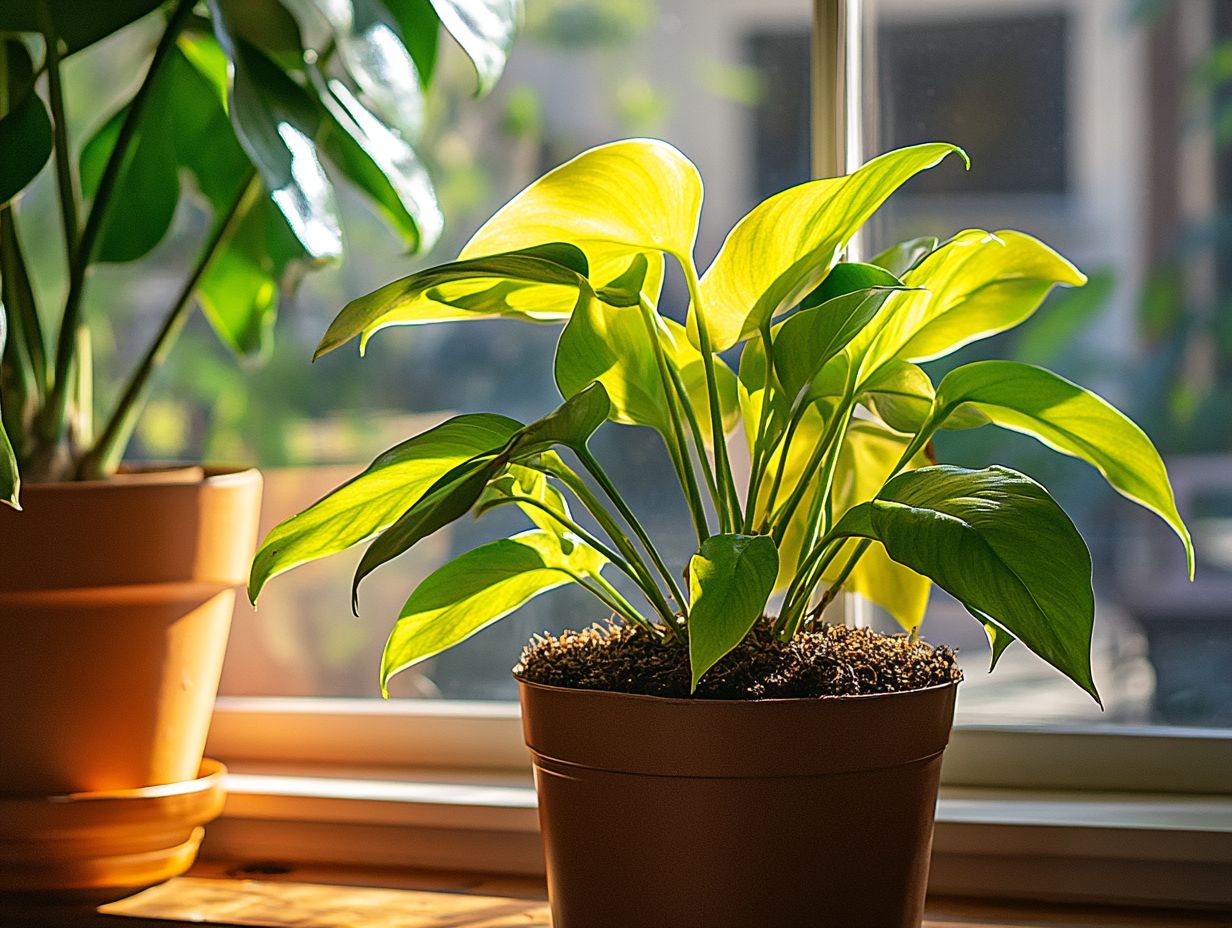
Coir is celebrated as a natural and sustainable material that significantly reduces the environmental impact of traditional gardening practices. As a byproduct of coconut processing, organic coco coir serves as a biodegradable alternative to peat moss and synthetic growing media. This promotes eco-friendly gardening techniques.
This remarkable material plays a crucial role in organic gardening. It offers a rich, nutrient-dense base that facilitates healthy plant growth while being gentle on the planet. By effectively retaining moisture, coir minimizes the need for excessive watering, which is especially beneficial in water-scarce areas. Additionally, the benefits of using perlite in indoor soil enhance root development, leading to stronger, more resilient plants.
As you seek sustainable options for your gardening endeavors, incorporating coir not only supports a greener approach but also aligns with the broader goal of utilizing natural materials that contribute to ecological harmony.
How to Use Coir in Indoor Plant Soil
Using coir for indoor planting can transform your garden let s dive in! Incorporating coir into your indoor plant soil is a simple yet effective way to elevate your gardening experience. When paired with other potting mix ingredients, coir can significantly enhance plant health.
To achieve the best results, consider mixing coir with:
- soil
- compost
- various organic amendments
You might also explore using coir bricks or blended coir products to craft an efficient seed starting mix, ensuring your plants thrive from the very beginning.
Mixing Ratios and Application Techniques
Determining the right mixing ratios and application techniques for coir can dramatically influence the success of your indoor gardening endeavors. A popular strategy involves combining coir with light materials like perlite and vermiculite, which help with drainage. This approach creates an ideal balance that enhances drainage, aeration, and moisture retention in your container gardening setups.
This tailored mix is particularly crucial for plants such as ferns and orchids, which flourish in well-draining environments. To create a nutrient mix, add compost to improve your nutrient balance, catering specifically to the needs of your plants.
When facing varying growing conditions, like low light or high humidity, adjusting the ratios to include more coir can help retain moisture while mitigating the risk of root rot. Employ proper watering practices by allowing the top layer to dry out before rewatering. This can prevent over-saturation, ensuring your indoor plants stay healthy and vibrant.
Potential Drawbacks of Using Coir
While coir presents a wealth of advantages, it also carries potential drawbacks that you should carefully consider particularly regarding transplant shock (the stress plants experience when moved to a new pot or location) and nutrient management. Grasping these factors is crucial for effectively utilizing coir in diverse plant growth situations, especially with delicate indoor plants like succulents and ferns.
Considerations for Specific Plants and Environments
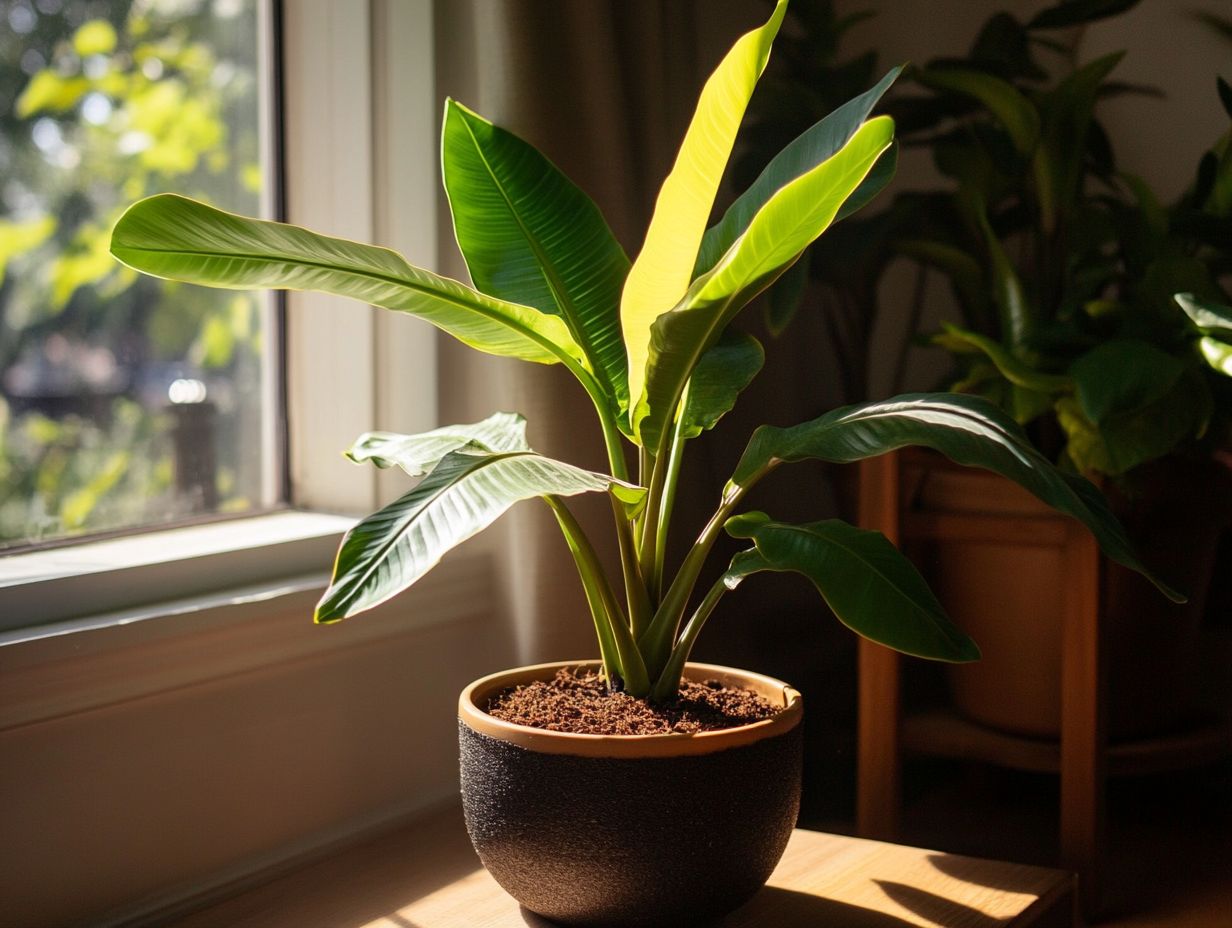
When using coir for indoor planting, consider the specific needs of your plants along with the growing conditions to optimize moisture levels and overall growth. For instance, indoor succulents have different moisture retention requirements compared to moisture-loving ferns, so it s crucial to tailor your coir application to suit each type.
Understanding how various indoor plants interact with coir can lead to healthier, more vibrant greenery in your space, contributing to improved root health and pest resistance. Succulents thrive in well-draining environments; they prefer coir mixed with sand or perlite to reduce moisture levels and prevent root rot. On the other hand, ferns flourish with a more moisture-retentive blend, meaning that incorporating additional organic matter can help maintain the humidity they crave. Additionally, exploring the benefits of mulching indoor plant soil can further enhance your plant care routine.
Moreover, factors like light exposure and room temperature significantly influence how often different plants need watering. This highlights the importance of adjusting your coir mixtures to align with each plant’s unique moisture requirements. This way, you can ensure they thrive beautifully in your home.
Explore coir today to see how it can boost your indoor gardening!
Alternatives to Coir in Indoor Plant Soil
While coir may be a favored option for indoor gardening, there are many effective alternatives for developing your potting mixes. Consider choices like peat moss, perlite, and various compost ingredients. Each of these can create a nutrient-rich foundation for your indoor plants, fostering robust growth and vibrant root development.
Comparing Different Soil Amendments
When you compare different soil amendments, you’ll uncover distinct advantages and disadvantages that directly influence your indoor plant health. These include nutrient balance and pest resistance.
Understanding how alternatives like peat moss, vermiculite, and compost vary in their ability to nurture healthy roots is essential for any gardening enthusiast, especially in managing light conditions and watering practices.
For example, peat moss is a champion in water retention and air circulation, making it perfect for those moisture-loving plants you adore. Meanwhile, vermiculite shines with its excellent drainage capabilities, ensuring that your succulents and cacti thrive without a hitch.
Compost also enriches the soil, boosting plant health and strengthening pest resistance thanks to its beneficial microorganisms.
By carefully evaluating these attributes, you can craft a tailored soil blend that maximizes the health and growth potential of your indoor plants. This ultimately guides you toward a flourishing indoor garden that stands strong against pests and diseases.
Frequently Asked Questions
Benefits of Coir
Using coir in indoor plant soil has several benefits. Coir is a natural and sustainable material that is lightweight, absorbent, and provides good aeration for plant roots. It also has a neutral pH level and is free from pests and diseases, making it a safe option for indoor plants.
Coir Usage and Versatility
Yes, coir can be used as the sole component in indoor plant soil. It is a great alternative to traditional soil and can be used on its own or mixed with other materials such as perlite or vermiculite for added benefits. It is also suitable for a wide range of plants, making it a versatile option for indoor gardening.
Environmental Benefits of Coir
Using coir in indoor plant soil is beneficial for the environment in several ways. Coir is a byproduct of coconut production, so its use reduces waste and promotes sustainability. It is also biodegradable, meaning it will naturally break down over time without harming the environment.
Improving Plant Growth with Coir
Yes, using coir in indoor plant soil can improve plant growth. Coir has excellent water retention capabilities, which helps to keep plants hydrated and nourished. Its ability to provide good aeration also promotes healthy root growth, leading to stronger and more vibrant plants.
Watering Frequency for Coir-Based Soil
The watering frequency for indoor plants with coir-based soil will depend on several factors such as the type of plant, pot size, and environmental conditions. Generally, coir retains moisture for longer periods compared to traditional soil, so you may need to water less frequently. It is best to monitor the soil’s moisture level and water when it feels dry to the touch.
Reusing Coir in Indoor Plant Soil
Yes, coir can be reused in indoor plant soil. Once your plant has outgrown its current pot, you can remove the old coir-based soil and add fresh coir to the pot. You can also mix the old coir with other materials to create a new potting mix. This not only saves money but is also an eco-friendly option for indoor gardening.
